Bibimbap bowls are a nutrient-dense, wholesome meal featuring carbs, protein, and vegetables. Fluffy brown rice, saucy tofu, sauteed vegetables, kimchi, make this recipe a filling and healthy meal. This vegan bibimbap bowl recipe great for lunch or dinner and they are easy to make, flavorful, spicy, wholesome, and delicious!
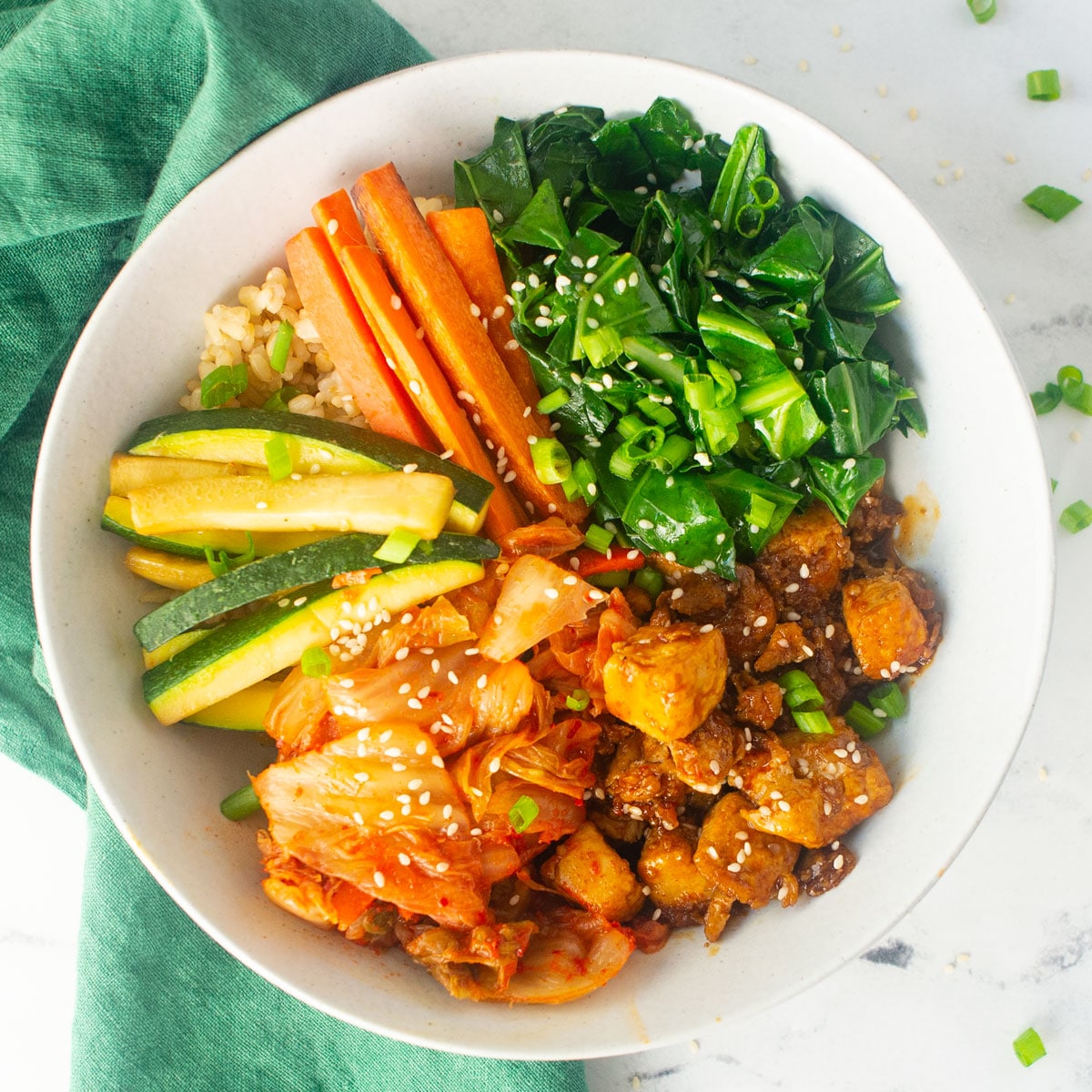
This post was originally published July 2016. Recipe and photos have been updated.
Bibimbap bowls…. now say that ten times fast! This vegan bibimbap is everything to me and I want it to be for you too.
In case you’ve never even heard of bibimbap, it’s a dish common in Korean cuisine. Typically it includes meat but not in this case! It’s a hearty bowl packed with brown rice, veggies, and alllll the sauce.
Gochujang sauce is a savory, spicy chili sauce made out of gochujang paste which is fermented soybeans and salt. It has the perfect amount of spice with tons of flavor. So I highly suggest you get your hands on some of this stuff and get on with this recipe stat.
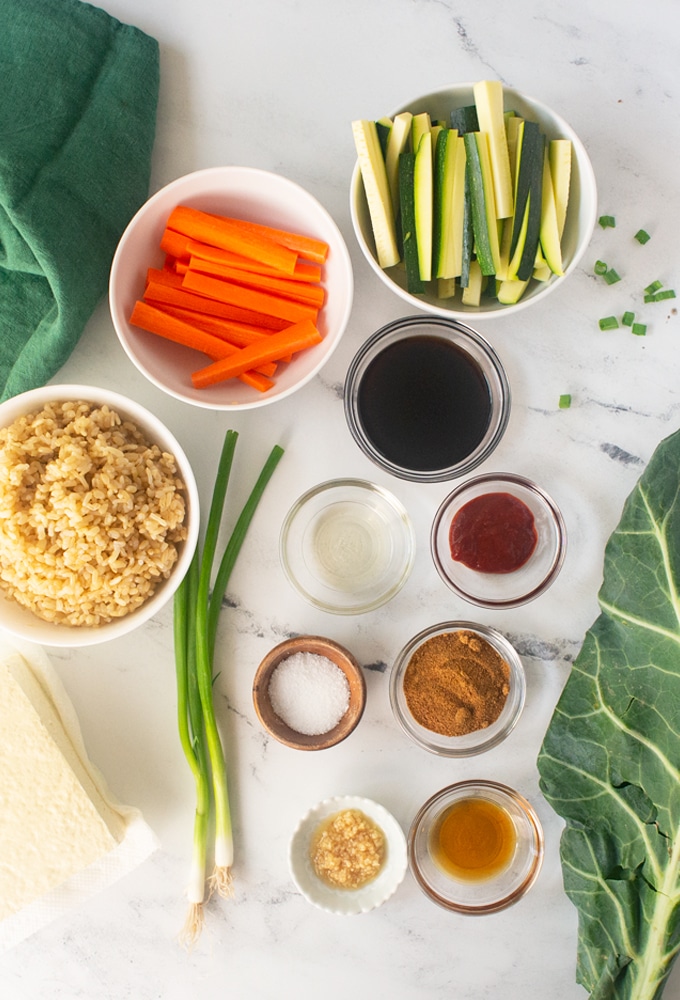
Ingredients for vegan bibimbap:
Bibimbap has a few different components. Let’s break it down:
- Brown rice
- Veggies – carrots, zucchini, and kale
- Tofu
- Sauce
- Liquid aminos
- Coconut sugar
- Gouchang paste
- Rice vinegar
- Cornstarch
- Sesame oil
- Garlic
- Chili flakes
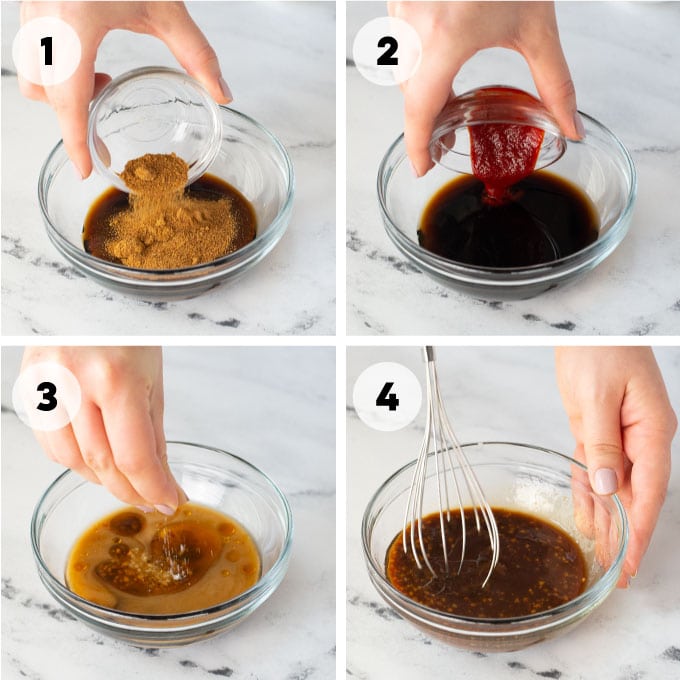
How to make vegan bibimbap
Start by whisking together all the ingredients for the sauce. Here you can taste and adjust seasonings as needed.
Where to buy Gochujang paste:
Gochujang paste can be found in your typical grocery stores in the Asian food aisle or online.
You can even find pre-made gochujang sauce but to make the sauce from scratch you will need the gochujang paste.
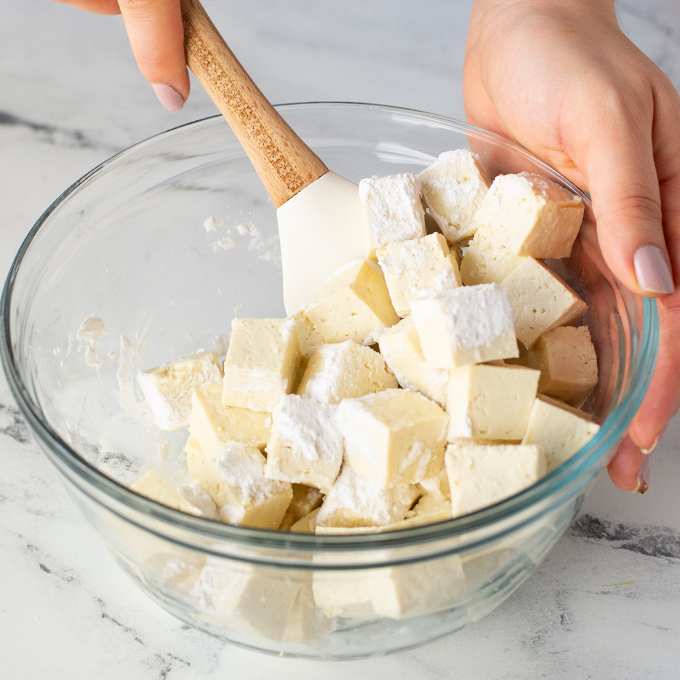
Once the tofu is pressed, combine tofu with cornstarch in a small mixing bowl. This helps create a crispy outer edge with sauteeing the tofu.
Prepare veggies for vegan bibimbap
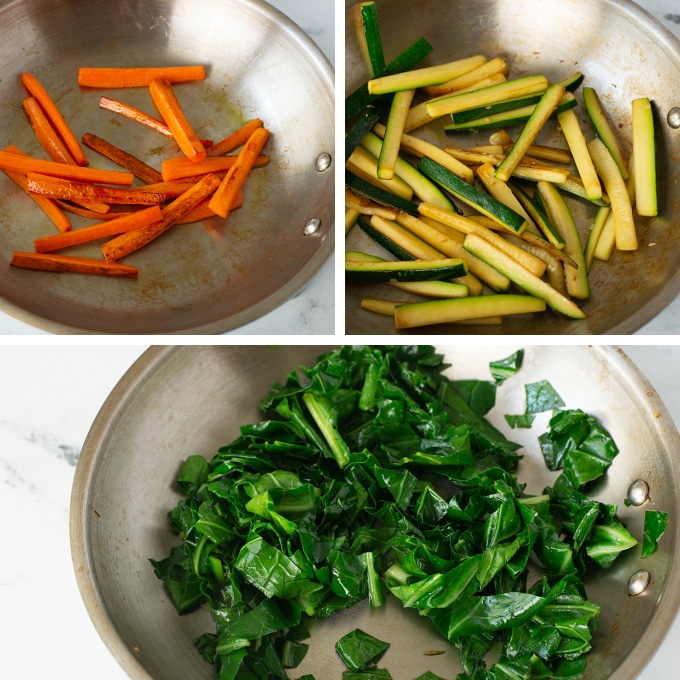
I like to sautee the veggies one at a time for vegan bibimbap. There are two reasons for this:
- Carrots, zucchini, and kale all have different cook times
- They can be arranged in the bowl in a rainbow-type way; giving you the iconic bibimbap look!
Of course, if this is too tedious for you, simply start by sauteeing the carrots, then add the zucchini, and last add the kale.
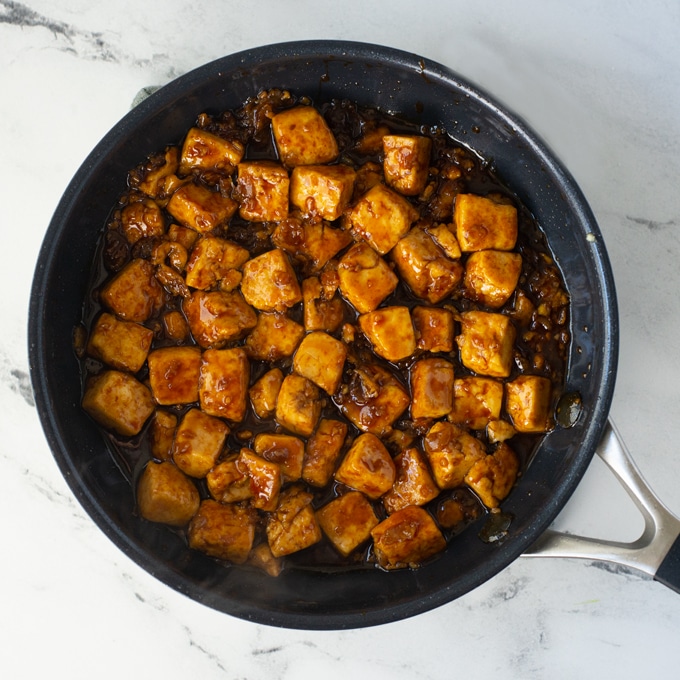
Sautee the tofu last until golden brown on all sides. Add the sauce and let thicken for a few minutes.
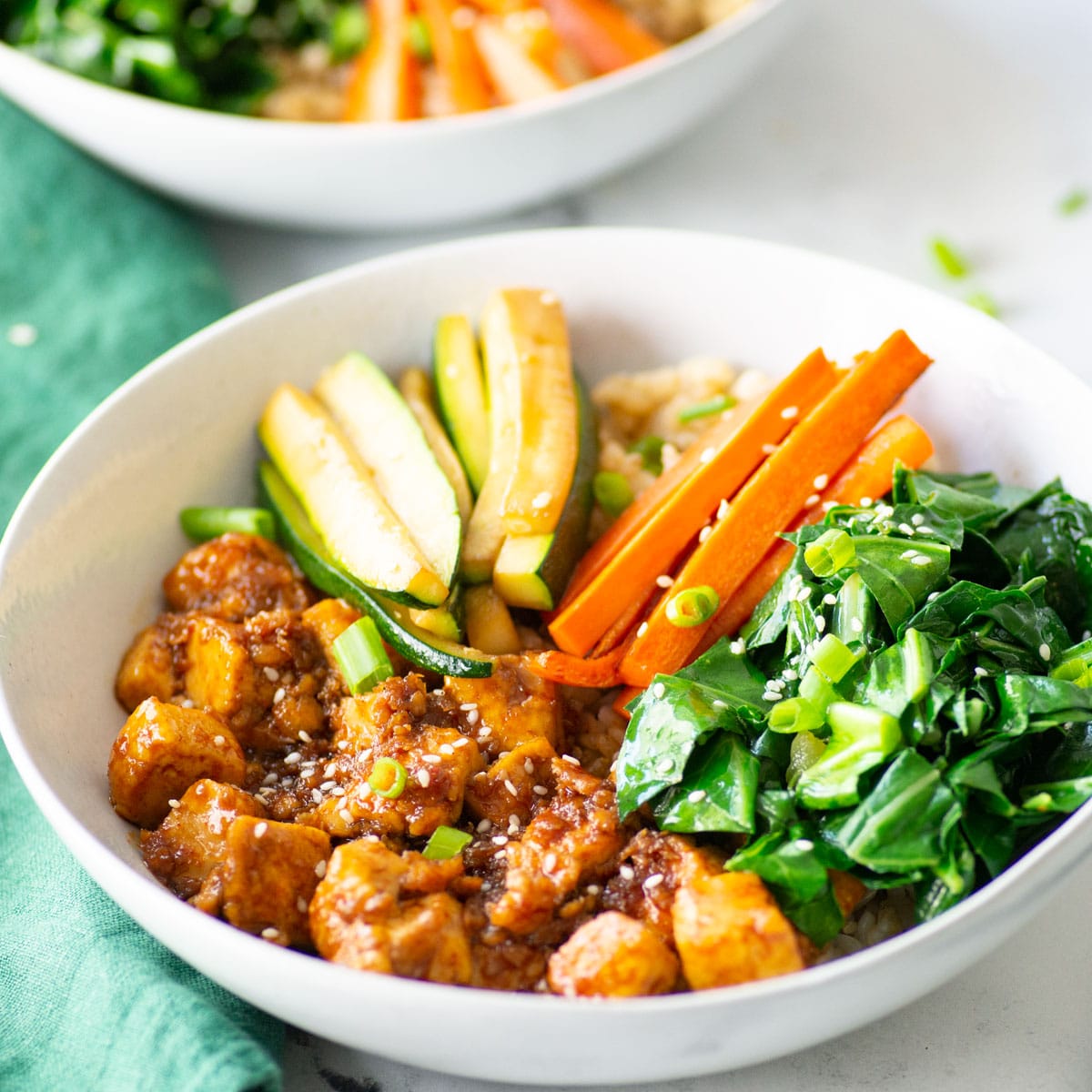
Assemble vegan bibimbap bowls
Start with a bed of rice. Then layer the veggies and tofu on top. Add kimchi if you’d like and top with sesame seeds and green onions!
Ways to customize your vegan bibimbap
Bibimbap bowls are the perfect meal because it combines carbs, protein, and vegetables. They can be as healthy or unhealthy as you choose, but I usually opt for a healthy option! Here are my recommendations:
- Use brown rice instead of white for a healthier carb option. Even try cauliflower rice for a delicious low-carb and gluten-free option
- Consume with a plant-based protein such tofu, tempeh, or even mung bean pancakes (my personal fav)!
- Serve with kimchi! Kimchi, like other fermented foods, are great for gut health and add a great flavor
- Eat with a fried egg on top. This would obviously make the dish non-vegan, but if you eat eggs this tastes great and is common in a traditional bibimbap bowl
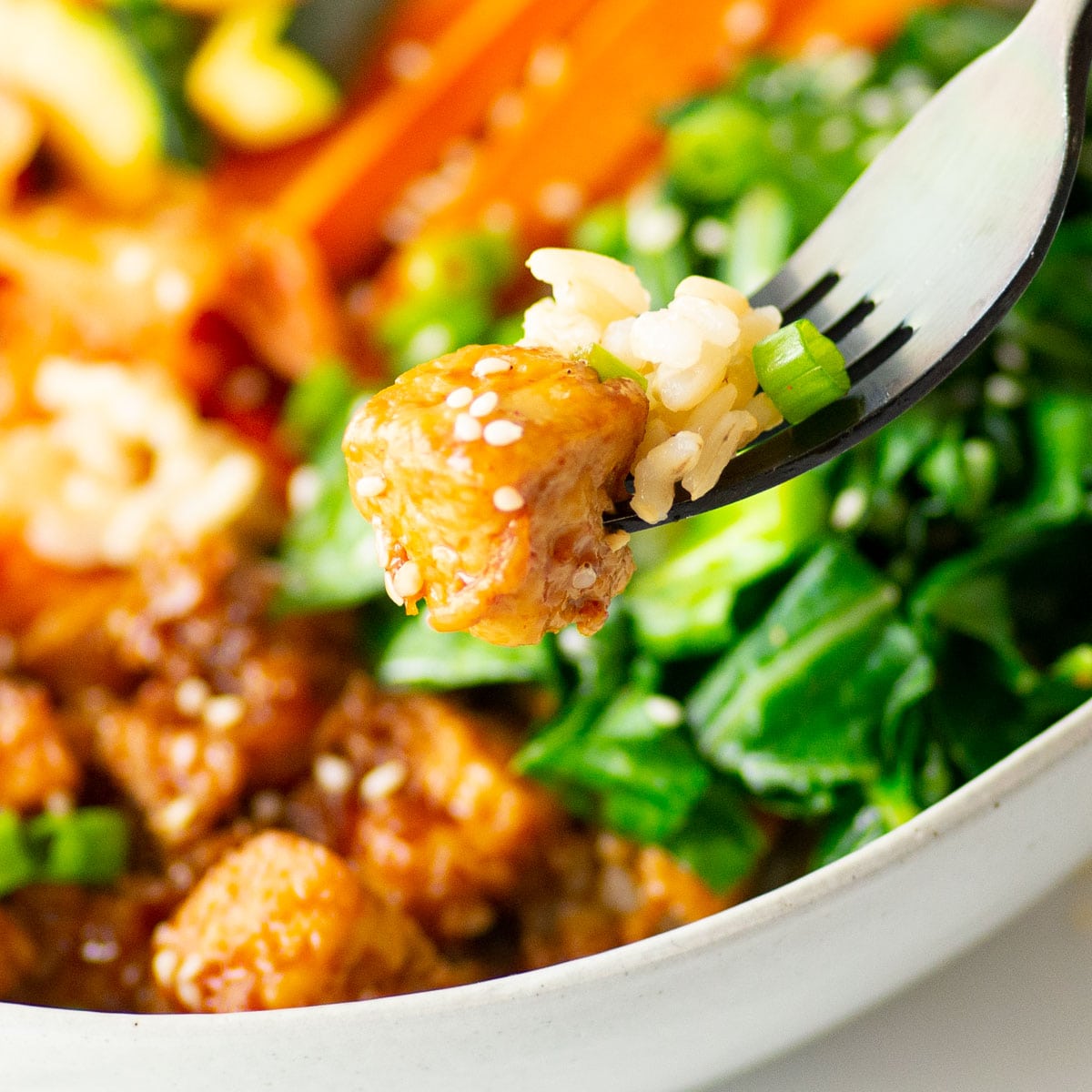
If you tried vegan bibimbap recipe, let me know in the comments below and share a photo using #mindfulavocado. I’d love to hear from you! Want to see more recipes? Let’s get social! CONNECT WITH ME on Facebook, Twitter, Instagram, or Pinterest to see what I’m currently cooking up!
If you like this vegan meal, you’ll LOVE:
Kale Sweet Potato Quinoa Bowls
Teriyaki Tofu Bowls
Vegan BBQ Tofu Bowls
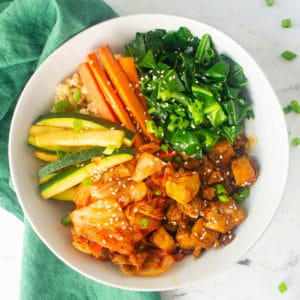
Vegan Bibimbap {Korean Bowls}
Ingredients
- 1/2 cup brown rice uncooked
Tofu:
- 1 block extra-firm tofu
- 1 Tablespoon cornstarch
- 2 Tablespoons coconut oil
Veggies:
- 1 Tablespoon coconut oil
- 1 Tablespoon liquid aminos
- 1 zucchini julienned
- 2 carrots julienned
- 4 cups kale or other greens such as spinach
Sauce:
- 1/4 cup liquid aminos can substitute with soy sauce, tamari, or coconut aminos
- 2 Tablespoons coconut sugar
- 1 Tablespoon gochujang paste
- 1 Tablespoon rice vinegar
- cornstarch slurry 1 Tablespoon cornstarch + 2 Tablespoons of water mixed
- 2 teaspoons sesame oil
- 2 garlic cloves minced
Toppings (optional):
- sesame seeds
- Sriracha if you want extra heat!
- kimchi
- chopped green onions
Instructions
- Cook brown rice according to package instructions (I personally use my Instant Pot to make brown rice).
- Press Tofu: Remove tofu from package and wrap in a kitchen towel or paper towels. Sandwich between plates and place heavy objects on top. Let sit 15-20 minutes.
- While tofu is pressing, whisk together all ingredients for the sauce. Set aside.
Make Veggies:
- Heat coconut oil in a small pan over medium heat. When hot, carrots and a splash of liquid aminos. Cook until edges are slightly charred (about 5-7 minutes). Remove from heat.
- Add zucchini; adding more coconut oil if needed and a splash of liquid animos. Cook for 2-3 minutes and remove from heat.
- Last, add the kale again with more coconut oil if needed and a splash of liquid animos. Stir until cooked down and vibrant green (2-3 minutes). Remove from heat.
Cook Tofu:
- Add 2 Tablespoons of coconut oil to the pan over medium heat. Add tofu and cook until golden brown on all edges.
- Add sauce and cook until thickened (1-2 minutes). Remove from heat.
Assemble Bowls:
- To assemble bowls, add rice, then place veggies and tofu on top.
- Top with sesame seeds, green onions, kimchi, and Sriracha sauce (optional).
- Leftovers keep in the fridge for about 5 days!
Notes
- Don't confuse gochujang paste with sauce. Sauce is ready made while the paste is used to make the sauce in this recipe!
- To save time, you can sautee all the veggies together. Start by cooking the carrots, then add the zucchini, and last add the kale.
- It's best to store leftovers disassembled - tofu in one container, veggies in another, and rice in another. Then assemble bowls when ready to eat.
Nutrition
Please note this post may contain affiliate links which do not impact the cost to you but gives me a small commission. Thank you for your support!


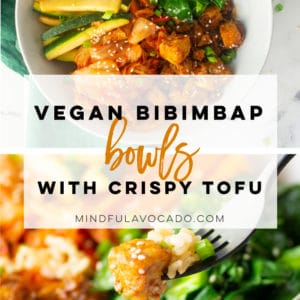
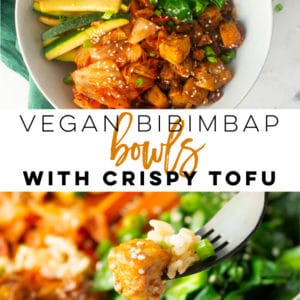
Yum!!!
I’ve always wanted to try making this dish, I added pickles instead of raw cucumber. Thanks for sharing Amanda!
Pickles is a great substitute. Thanks for sharing!
This is such a great recipe. Love the raw veggies and the sauce which I’ve never really heard of before but was curious to try out!
Glad you enjoyed, Natalie!